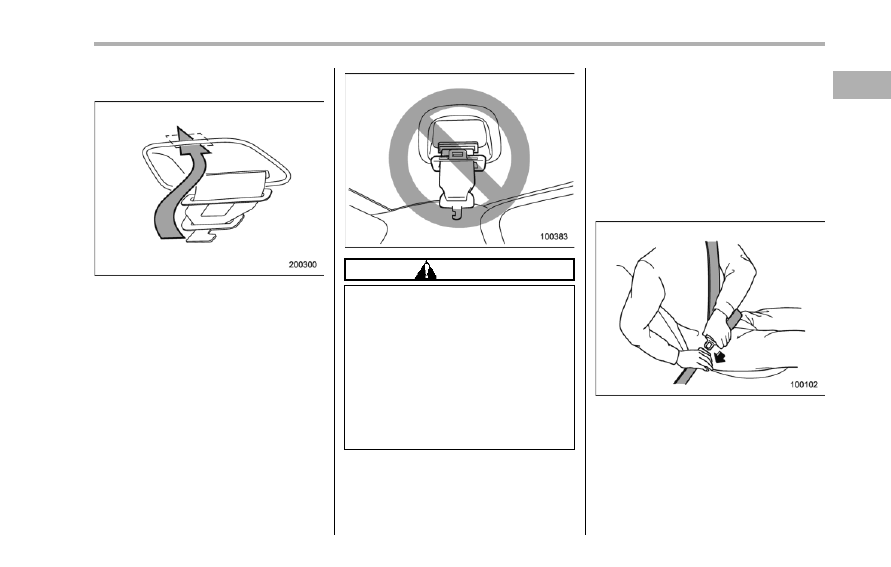Subaru Tribeca (2014 year). Instruction - part 4

it in, and the connector (tongue) plate will
disconnect from the buckle.
2. With the belt held by hand, allow the
retractor to roll up the belt slowly. You
should hold the webbing end and guide it
back into the retractor while it is rolling up.
Neatly store the tongue plate in the recess
on the ceiling and then insert the con-
nector (tongue) plate into the slot located
at the front of the recess.
CAUTION
. Do not allow the retractor to roll
up the seatbelt too quickly.
Otherwise, the metal tongue
plates may hit against the trim,
resulting in damaged trim.
. Have the seatbelt fully rolled up
so that the tongue plates are
neatly stored. A hanging tongue
plate can swing and hit against
the trim during driving, causing
damage to the trim.
! Third-row seatbelt
1. Sit well back in the seat.
2. Pick up the tongue plate and pull the
belt out slowly. Do not let it get twisted. If
the belt stops before reaching the buckle,
return the belt slightly and pull it out more
slowly. If the belt still cannot be unlocked,
let the belt retract slightly after giving a
strong pull on it, then pull it out slowly
again.
3. Insert the tongue plate into the buckle
until you hear a click.
Seat, seatbelt and SRS airbags
1-25
– CONTINUED –